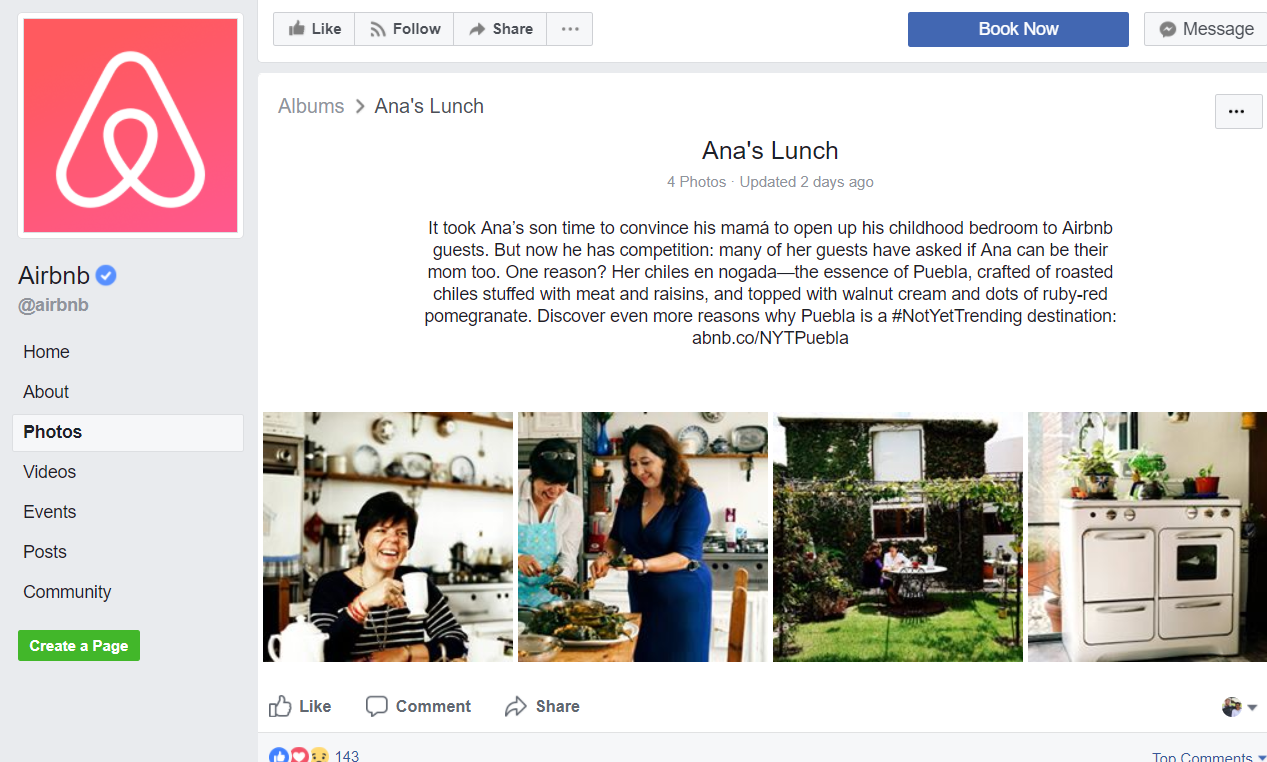For Google News
3 Social Media Storytelling Ingredients for Effective Brand Narratives
By Kyle Harper on December 12, 2017
When I first started out in marketing, I was attracted to content marketing because there seemed to be something noble about it.
The way content marketers talked about social media storytelling made it sound whimsical and impassioned. Content production and planning felt more like a creative endeavor than a business practice. And at the very top of it all, brand storytelling as an ultimate goal felt like the purest, most authentic marketing practice that anyone could pursue. This wasn't even business; it was just art-what could be better?
But one SEMRush subscription and an AdWords certification later, that content marketing shine seemed a bit duller. I was working for clients who wanted visibility first and story second, who considered narrative or brand authenticity to be levers to pull rather than a practice or orientation for their marketing.
And it didn't work.
This wasn't because authenticity or storytelling is ineffective, but rather because storytelling wielded as a tactic doesn't often come off as an actual story so much as a gimmick. Apparently audiences aren't really into that. Who knew?
But in opposition to this approach, I found brands and companies that were invested in brand storytelling not just as lever but as an essential part of the way they communicate with their audience. In doing so, they created experiences that were genuinely more engaging, which in turn drove sustained interaction with their long-standing and soon-to-be customers.
It makes a marketer wonder, though, what is the essential difference between buzzword "story" marketing and actual brand stories when it comes to social media? The answer comes down to one word: development.
Image attribution: Rachael Gorjestani
Three Ingredients for Brand Narratives . . .
Storytelling is a practice nearly as old as mankind itself. Many of our oldest surviving texts are fables, myths, and allegories. We can trace the psychology of modern-day creativity back to prehistoric cave paintings. There is no shortage of scholarship and writing about the nature of stories and what makes them tick. If you want to become a better storyteller and dive into the nuts and bolts of narratives, there are loads of books that can help you do that.
If you'd rather just get the essentials, however, there are three primary ingredients that make good stories work.
A Protagonist
Who your story is centered on, who embodies the themes that your story is meant to promote. In many cases, this will be your brand or company, or it can also be an agent that represents you brand.
A Goal
Your brand pursues things. On the business side, this might just be buying customers, but built on top of this are layers that weave together your product, vision, values, and audience into a relationship. When your brand makes a concerted effort towards furthering a vision, promoting one of their values, or reaching a milestone regarding a product, you have a tangible goal.
Development
If your brand/protagonist is point A and your goal is point B, development is how you move from one to the next. There's a reason that good stories don't just tell a character's backstory or the details of their victory lap at the end. People want to see protagonists struggle, change, and eventually overcome or succumb in pursuit of their goal. While there are ways to turn stories of failure into something good, we'll focus on overcoming for your brand in most cases.
Here's the thing about social media marketing. Marketers are really comfortable with presenting a protagonist and occasionally presenting goals, but for the most part we completely forget development. Part of this is just a platform failing. Social media is, by its nature, built around people and brands talking about themselves. But with just a bit of preparation, it doesn't take much to grow these protagonist portraits into more developed stories.
. . . And Three Story Archetypes That Are Perfect for Social Media
There is no one correct way to craft a narrative for your business. One of the powerful ways marketers define a personality for their brand is by creatively combining the three narrative ingredients in surprising ways and orders. But to get started or spice up your social media storytelling efforts, here are three powerful frameworks that brands use to tell their stories.
Brands and Synecdoche
Synecdoche was one of my favorite spelling bee words growing up, and it's an often-forgotten writing trick that's really fun to do. In synecdoche, creatives use part of something (like your brand) to stand for the whole it is a part of. For social media marketers, this is a particularly easy step, because it derives your brand's development from how you support the goals of your chosen protagonists.
Take Airbnb for instance. While the brand excels at purely photographic content of some of their more beautiful spaces, they also take time on their Facebook to tell the stories of their hosts. It helps elevate the brand's interaction from "look at this amazing place" to "place yourself into the unique history of this amazing place." It's a subtle difference that can be achieved with a paragraph or two of copy, but it's one that develops the brand as partners in the stories their hosts are trying to tell, rather than just being an app for them to use. They accomplish this through images with filled out captions, or albums dedicated to a specific host telling the story of how they came to open up their home.
Moving from relaxed getaways to the world of sports apparel, Under Armour has invested heavily in "synecdoche" content for their video arm over the years. Starting back in 2014 with a successful thirty-second ad featuring Misty Copeland, the brand has evolved their micro-profiles of famous athletes into short videos in their #IWILL and #WEWILL campaigns. These shorts gather millions of views across YouTube with thousands more in interactions across social media and tie Under Armour's brand to the most defining struggles, developments, and goals of all sorts of athletes and athletic professionals. It adds depth to otherwise empty images of athletes wearing apparel while training and gives Under Armour something substantial to share on their social channels for followers to bite into.
https://www.facebook.com/UnderArmour/videos/10155640689616287/
Telling It from the Beginning
Most stories we engage with are told in a linear way, from beginning to end. Tie this format to the rapid nature of social media, and you have a fertile space for brand journalism to grow. With this approach, brands welcome audiences into their narratives by following a story as it happens. They interact with audiences along the way to understand what sort of outcomes they are looking for, and then craft content, experiences, and a living campaign around this feedback. It's a method that requires hustle and often ample content production bandwidth, but in return it generates authentic conversations and actionable audience engagement.
Perhaps the most impressive model of this behavior is the social media command center or newsroom, a method popularized by David Beebe. With this approach, enterprise-scale brands equip a social media storytelling team with the means and permission to listen for and react to audience stories in the moments that they happen. Marriott was one of the first partners to pilot the approach, generating powerful globetrotting social experiences that they were able to dynamically develop at a pace much faster than most brand social media efforts. The approach would later catch on with other similar scale brands like Southwest Airlines, which used the method to simultaneously tap into the traveling stories of their audiences while also dramatically improving their ability to catch social media complaints.
Even if this type of scale might be out of scope for your business, the principle is the same: Actively listen to the interests and needs of your audience, tap into stories the community appears interested in, and then enable your audience to grow that story more than would have been possible without your brand.
The End at the Beginning
The last archetype to think about doesn't end with an achieved goal but rather starts by announcing the goal your brand is pursuing. This often comes in the form of promises, initiatives, or campaigns that invite the audience to participate or follow along in some way.
Perhaps the most hyperbolic example of this today is Elon Musk's company SpaceX bringing people along on their journey to send a spacecraft to Mars by 2018 (as announced in 2016). Along the way, they've strapped streaming devices to most of their craft, shared videos of all of their failed tests, and kept readers and viewers in the loop with regular tweets and updates from Musk himself.
Boeing has even tried to hop in on the fervor the campaign has generated over time, but without the same long-standing cachet that SpaceX has, their promise has largely fallen flat in comparison to Musk's simple response: "Do it." Long-form experiences can quickly add up for your brand, eventually building more trust than even market share or industry presence. It is in this that the most powerful effects of good social stories are seen-and an example is set for brands ready to take the dip into telling truly engaging social stories.
For more stories like this, subscribe to the Content Standard newsletter.
Featured image attribution: Mike Erskine




